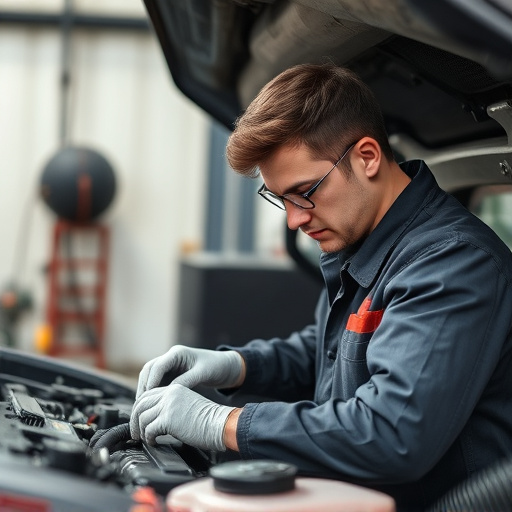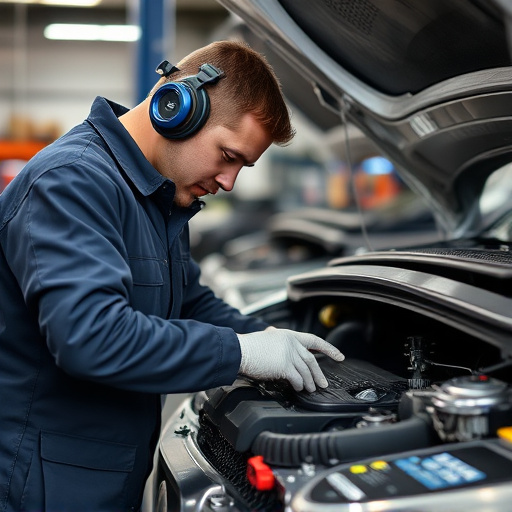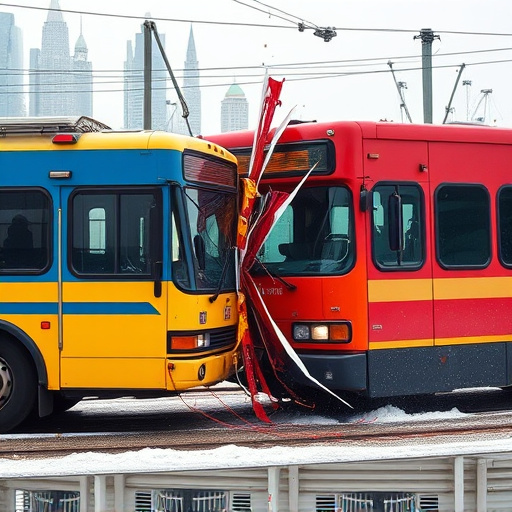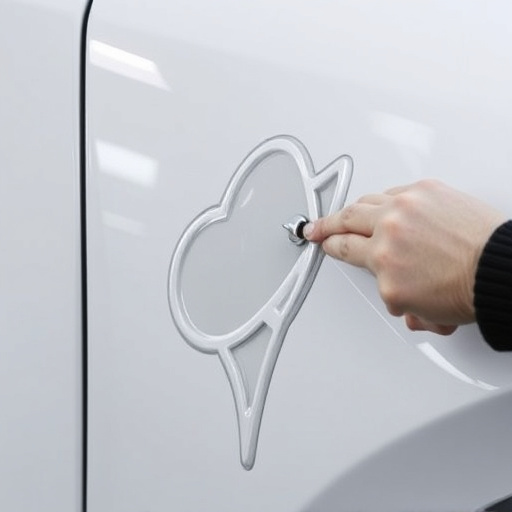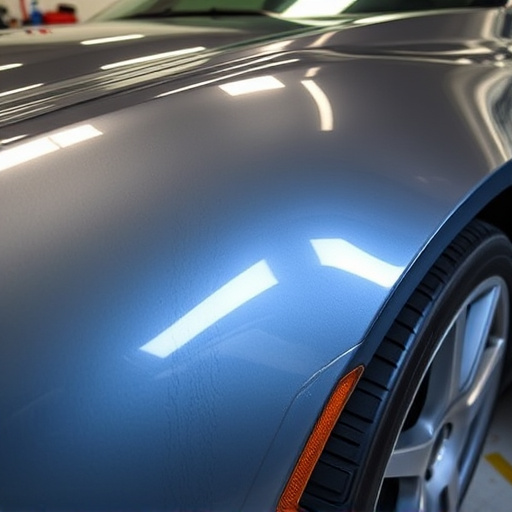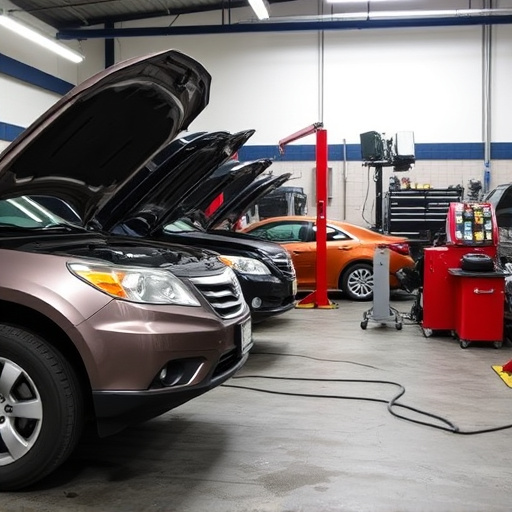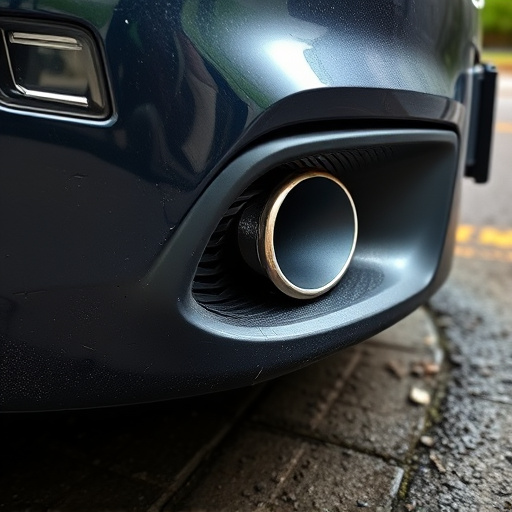Tesla's battery protection systems use impact-resistant materials and sensors to prevent damage from road debris. Damage assessment includes checking for corrosion, short circuits, and fluid intrusion, with specialized tools measuring voltage and resistance. Repairs range from paintless dent repair for minor dents to cell/module replacement for severe internal shorts. Prioritizing Tesla battery protection repair ensures optimal battery health and long-term performance after road debris incidents.
Tesla vehicles are renowned for their advanced technology, including sophisticated battery protection systems. However, road debris damage can pose a significant threat to these crucial components. This article delves into the intricacies of Tesla battery protection repairs after such incidents. We’ll explore how to assess debris-related battery damage, discuss effective repair strategies for optimal performance, and provide insights into maintaining your Tesla’s power source post-accident.
- Understanding Tesla Battery Protection Systems
- Assessing Road Debris Damage to Batteries
- Repair Strategies for Optimal Battery Health Post-Damage
Understanding Tesla Battery Protection Systems
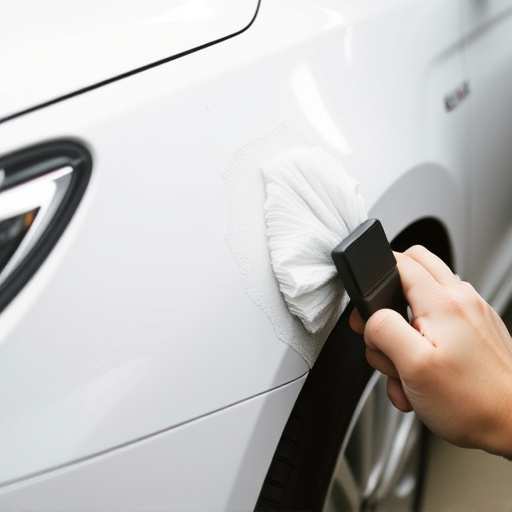
Tesla’s battery protection systems are designed to safeguard the vehicle’s crucial lithium-ion batteries from potential damage. These advanced systems employ a combination of physical barriers and sophisticated sensors. The exterior panels and frames of Tesla cars feature impact-resistant materials, which act as the first line of defense against road debris and minor collisions. Additionally, integrated sensors continuously monitor the battery pack for any signs of stress or disruption.
In the event of impact or road debris damage, these systems swiftly activate safety protocols. This may include deploying airbags designed specifically to protect the battery compartment, as well as temporarily disconnecting the battery to prevent short circuits or thermal runaway. For minor dents or scratches that don’t compromise structural integrity (a service often provided through paintless dent repair techniques), Tesla’s system may not trigger a full activation, allowing for more cost-effective Tesla battery protection repair solutions compared to more severe damage scenarios.
Assessing Road Debris Damage to Batteries
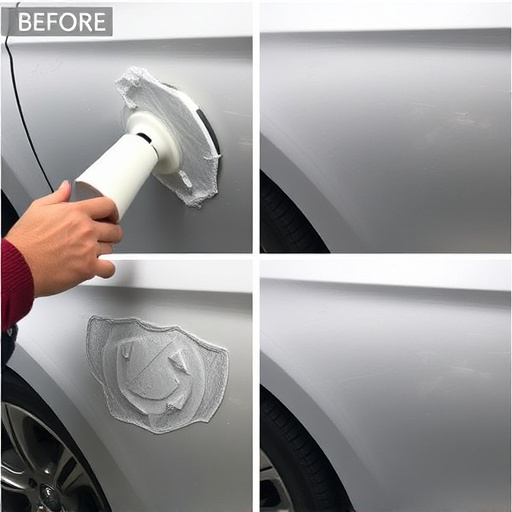
When Tesla battery protection systems are compromised by road debris damage, a meticulous assessment is crucial. Beyond visible cracks or punctures, assess internal components for any signs of corrosion, short circuits, or fluid intrusion. These indicators can suggest more severe issues that require professional attention to prevent further damage and ensure optimal battery performance.
Proper evaluation involves using specialized tools to measure voltage levels, check for resistance, and identify any anomalies in the electrical system. Experienced technicians will also inspect the protective casing and sealing mechanisms, ensuring they remain intact and undamaged. This comprehensive approach, akin to an automotive restoration, guarantees that repairs extend beyond superficial fixes, addressing all aspects of the Tesla battery protection system to ensure safe and efficient operation. Think of it like car dent removal on a microscopic level, meticulously repairing even the smallest damage to prevent future complications—a key aspect provided by fleet repair services designed for electric vehicles.
Repair Strategies for Optimal Battery Health Post-Damage
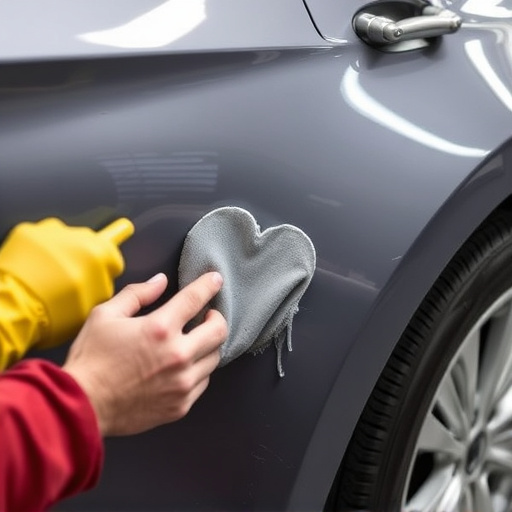
After experiencing road debris damage, prioritizing Tesla battery protection repair is essential for maintaining optimal battery health. The first step involves assessing the extent of the damage, which can range from minor cracks to severe internal short circuits. For minor issues, a simple cleaning and inspection may suffice, ensuring no foreign particles have infiltrated the battery compartment. This initial evaluation sets the foundation for effective repair strategies.
For more significant debris-related damage, specialized Tesla battery protection repair techniques are required. These may include replacing affected cells or modules, reconfiguring circuitry to mitigate residual risks, and sealing the battery enclosure to prevent further contamination. Leveraging automotive collision repair expertise ensures that these repairs not only restore functionality but also safeguard the long-term performance of the vehicle’s power source. In some cases, a complete bumper repair might be necessary to complement the battery protection efforts, ensuring the vehicle is restored to its pre-incident condition.
Protecting Tesla’s advanced battery systems is paramount to maintaining optimal vehicle performance and efficiency. When road debris damage occurs, a swift assessment and implementation of appropriate repair strategies are essential. By understanding the intricacies of Tesla’s battery protection mechanisms and employing effective restoration techniques, owners can ensure their batteries remain in top condition, safeguarding against future issues and maximizing the longevity of their electric vehicles. This comprehensive approach to Tesla battery protection repair is crucial for maintaining a reliable and sustainable transportation experience.





